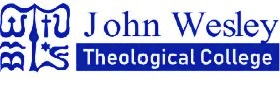Linking points in scientific and theological theories on the origin and spread of life
DOI:
https://doi.org/10.59531/ots.2023.1.1.49-62Keywords:
Geology and Genesis, Life on Earth, Creation and EvolutionAbstract
According to the scientific world model, one can describe the development of life on earth as a partial process of a long chain of events. In this study, we briefly describe this process, starting with the formation of the planet Earth as a habitat, and going all the way to the current state of the biosphere. In addition, we review some religious creation stories with the aim of finding connections with the scientifically described and accepted sequence of events.
In the first part of the study, we identify the elements of the Earth's environmental system that are essential for sustaining life. We will examine the process of the formation of the life forms and their changes over time, and then we will compare this knowledge with the creation stories of the Old Testament, the Koran, and a Native American tribe. In the next section, we describe the scientific definition of life and the process of the formation of a living organism. Finally, we will look at how the Earth was populated by the initially evolved or created life forms.
The study gives help to link the specific events of the Old Testament’s creation activity to the continuous chain of geological, chemical and biological evolution.
References
Brooke, John Hedley (1991): Science and Religion: Some Historical Perspectives, Cambridge History of Science. – Cambridge University Press, Cambridge [England]; New York.
Draper, John William (1875): History of the Conflict between Religion and Science. – D. Appleton. New York.
Fox D. (2007): Primordial soup’s on: scientists repeat evolution’s most famous experiment. – Scientific American. March 28, 2007.
Marsh, James H.; Graves, Brownyn (editors) (2021): The Canadian Encyclopedia. – Encyclopædia Britannica, Inc. Corporate Site
Mayr, Ernst (1982): The Growth of Biological Thought: Diversity, Evolution, and Inheritance. – Belknap Press, Cambridge, Mass.
MEK1: Bibliai teremtéstörténet. Mózes első könyve. A teremtésről. – In: Teremtéstörténetek. Országos Széchenyi Könyvtár Elektronikus Archívuma, https://mek.oszk.hu/00100/00192/html/001.htm#d2
MEK2: Iszlám teremtéstörténet. Az ég, a föld és az angyalok teremtése. A Korán és a Hadíth nyomán. – In: Teremtéstörténetek. Országos Széchenyi Könyvtár Elektronikus Archívuma, https://mek.oszk.hu/00100/00192/html/001.htm#d17
Miller, Stanley L. (1953): A production of amino acids under possible primitive earth conditions. – Science 117(3046): 528-529.
https://doi.org/10.1126/science.117.3046.528
Plank Zsuzsanna (2021): Környezeti fizika I. Fizikai alapismeretek. – Wesley János Lelkészképző Főiskola, Budapest. ISBN: 9786155048661
Sagan, Carl (2010): Definitions of life. - In: M. Bedau, C. Cleland (Authors), The Nature of Life: Classical and Contemporary Perspectives from Philosophy and Science. (pp. 303-306). Cambridge University Press, Cambridge.
https://doi.org/10.1017/CBO9780511730191.029
Schrödinger, Ernst (1970): Mi az élet? – In: Válogatott tanulmányok. Gondolat, Budapest.
Szathmáry Eörs (2003): Az élet keletkezése. – Magyar Tudomány 48(109) (10): 1220-1247.
Szent-Györgyi Albert (1973): Az élő állapot. – Kriterion, Bukarest
White, Andrew Dickson (1896): A History of the Warfare of Science with Theology in Christendom. – Macmillan, London.
Zemplén Gábor (2006): Kreácionizmus-pro és kontra. – Világosság 47(6-7): 23-40.
Downloads
Published
Versions
- 2024-10-22 (2)
- 2023-05-08 (1)
How to Cite
Issue
Section
License

This work is licensed under a Creative Commons Attribution-NonCommercial-NoDerivatives 4.0 International License.
OTS articles are subject to the Creative Commons Attribution-NonCommercial-NoDerivates 4.0 International Licenses Copyright Terms.




